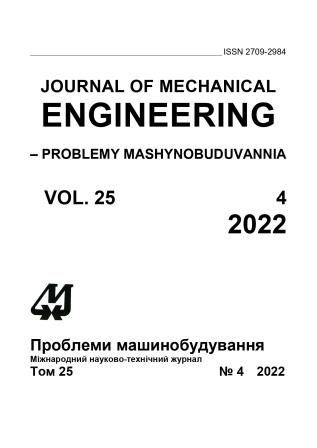Method of Obtaining of Metal Oxide Anodes That Do Not Contain Noble Metals
Abstract
In the mining and industrial regions of Ukraine, a large amount of mine and quarry waters is formed. Due to high mineralization, they cannot be discharged into natural hydrographic objects without deep processing, including demineralization. Most of such waters are significantly contaminated with concentrates of sulfides and dissolved iron compounds, which hinder their further purification. At the same time, thermal power plants located in these regions consume a significant amount of scarce drinking water for their needs. Deep processing of mine and quarry waters allows to clean them and obtain feed water for heating systems, boilers of TPPs and CHPs. A method of obtaining stable inert titanium-based anodes with an active coating of PbO2, which do not contain noble metals and their compounds, has been developed. The method consists in protecting titanium from passivation with an oxide film by thermally applying a MnO2 coating, and later applying to the base with this coating a thin layer of PbO2 from an alkaline complex electrolyte containing 2.5 mol/dm3 NaOH, 0.6 mol/dm3 EDTA, ethylene glycol additive and is a saturated PbO. The main 3–5 mm thick layer of coating is applied from the nitrate electrolyte, which includes Pb(NO3)2 1 mol/dm3, Cu(NO3)2 0.4 mol/dm3, Al(NO3)3 0.2 mol/dm3 and the gelatin additive. A method of extending the service life of an alkaline electrolyte by reduction of Pb (IV) compounds during the contact with the active surface of metallic plumbum is described. The conducted resource tests of this anode for 1400 hours proved its stability when processing solutions containing a mixture of sodium sulfate and sodium chloride. On the basis of this anode, the technology of electrochemical deironing of mine waters and removal of sulfides from them before demineralization was developed and experimentally tested. This technology is the only possible method of reagent-free iron removal and removal of sulfides from waters with high mineralization. Such anodes significantly expand the scope of application of electrochemical processes. They can be used not only for water treatment in thermal power generation, but also for the treatment of wastewater of various mineral and organic composition, chemical and technological processes for obtaining oxidants, etc.
Downloads
Published
Issue
Section
License
Copyright (c) 2023 В. Г. Михайленко, О. В. Антонов, О. І. Лук’янова, Є. Ф. Лук’янов, О. Є. Хінєвіч, Т. С. Вітковська

This work is licensed under a Creative Commons Attribution-NoDerivatives 4.0 International License.
All authors agree with the following conditions:
- The authors reserve the right to claim authorship of their work and transfer to the journal the right of first publication of the work under the license agreement (the agreement).
- Authors have a right to conclude independently additional agreement on non-exclusive spreading the work in the form in which it was published by the jpurnal (for example, to place the work in institution repository or to publish as a part of a monograph), providing a link to the first publication of the work in this journal.
- Journal policy allows authors to place the manuscript in the Internet (for example, in the institution repository or on a personal web sites) both before its submission to the editorial board and during its editorial processing, as this ensures the productive scientific discussion and impact positively on the efficiency and dynamics of citation of published work (see The Effect of Open Access).

